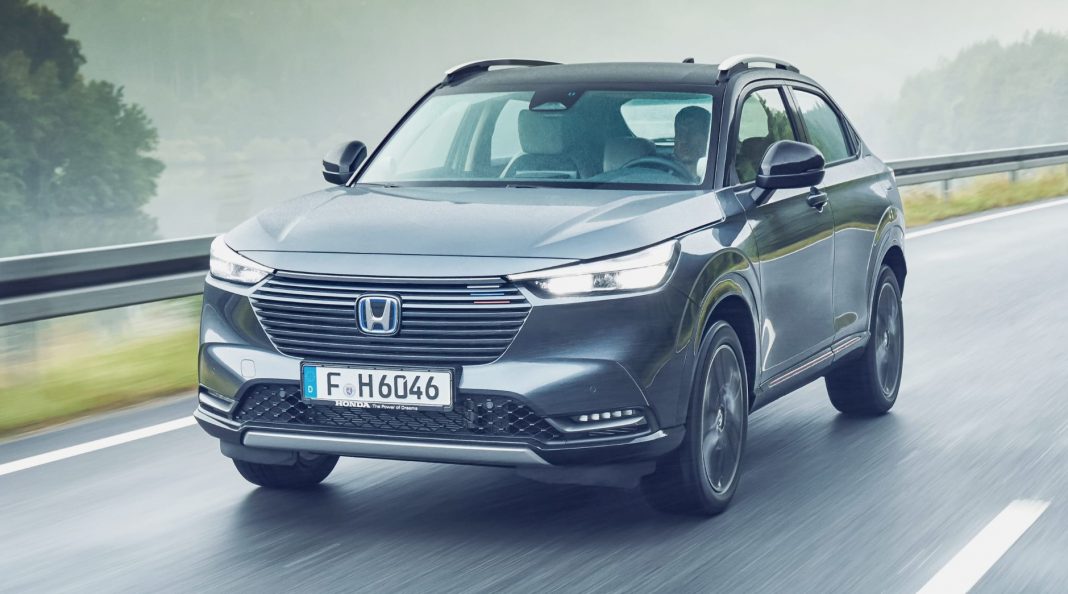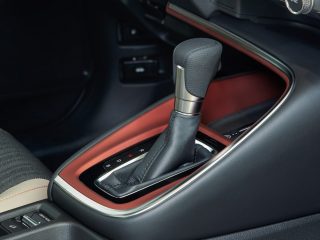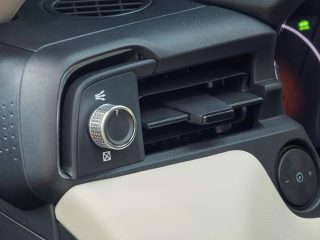 Honda hopes hybrid power can propel its new HR-V to the top of the small SUV class.
Honda hopes hybrid power can propel its new HR-V to the top of the small SUV class.
Honda Australia is undergoing a transformation and an all-new generation model in the popular SUV class is just the kick they need to boost sales into a new future. So welcome the Honda HR-V Hybrid, a new version of its popular crossover that now packs an electrified drivetrain and is on track to arrive in Australia in the first half of 2022.
But to take on the ultra-competitive small SUV segment, the new Honda HR-V has quite a task on its hands. It faces off against an array of rivals that include the sharp-handling Ford Puma, Toyota CH-R, Nissan Juke, Hyundai Kona, Kia Seltos and Renault Captur. It’s a crowded class with each competitor offering its own take on the family crossover. With the HR-V, Honda is pinning its hopes on a self-charging hybrid powertrain and sleek, minimalist styling to win buyers over.
First impressions are positive. The HR-V adopts a stance that sets it apart from some crossovers, with a coupe-SUV-style roofline that gives the car a distinctive silhouette. The design is a departure from Hondas of late, with uncluttered surfacing and minimal creases. It looks fairly contemporary and fresh in the metal, although the large, bluff front end does look awkward from some angles.

With a 20mm lower roofline than its predecessor, but increased ground clearance, you might expect headroom to be at a premium inside. The new HR-V’s packaging puts paid to these concerns, however. Unlike some rival brands, Honda hasn’t housed the battery for its e:HEV hybrid powertrain within the floor of the car, instead mounting it below the boot area. This allows for a lower floor, and in turn lower seats, providing added headroom.
This solution has impacted boot capacity though. At 319 litres load space is a significant 32 per cent down on its predecessor’s, and the HR-V gives up 103 litres to the Nissan Juke, the car that coined this class. The Honda does have a trick up its sleeve though, with the HR-V’s clever Magic Seat set-up making a return for this new-generation model.

The rear seats can be folded into the floor of the car, giving a more respectable 1289-litre capacity, and the seat bases can also be folded upwards – like a cinema chair – to carry large items in the second row.
With an extra 35mm of rear legroom over the previous HR-V, tall passengers are easily accommodated in the back seats with a good level of knee room. What may be more of a concern is the overall ambience – the black cloth and leather trim of our test car made things a touch gloomy in the rear.
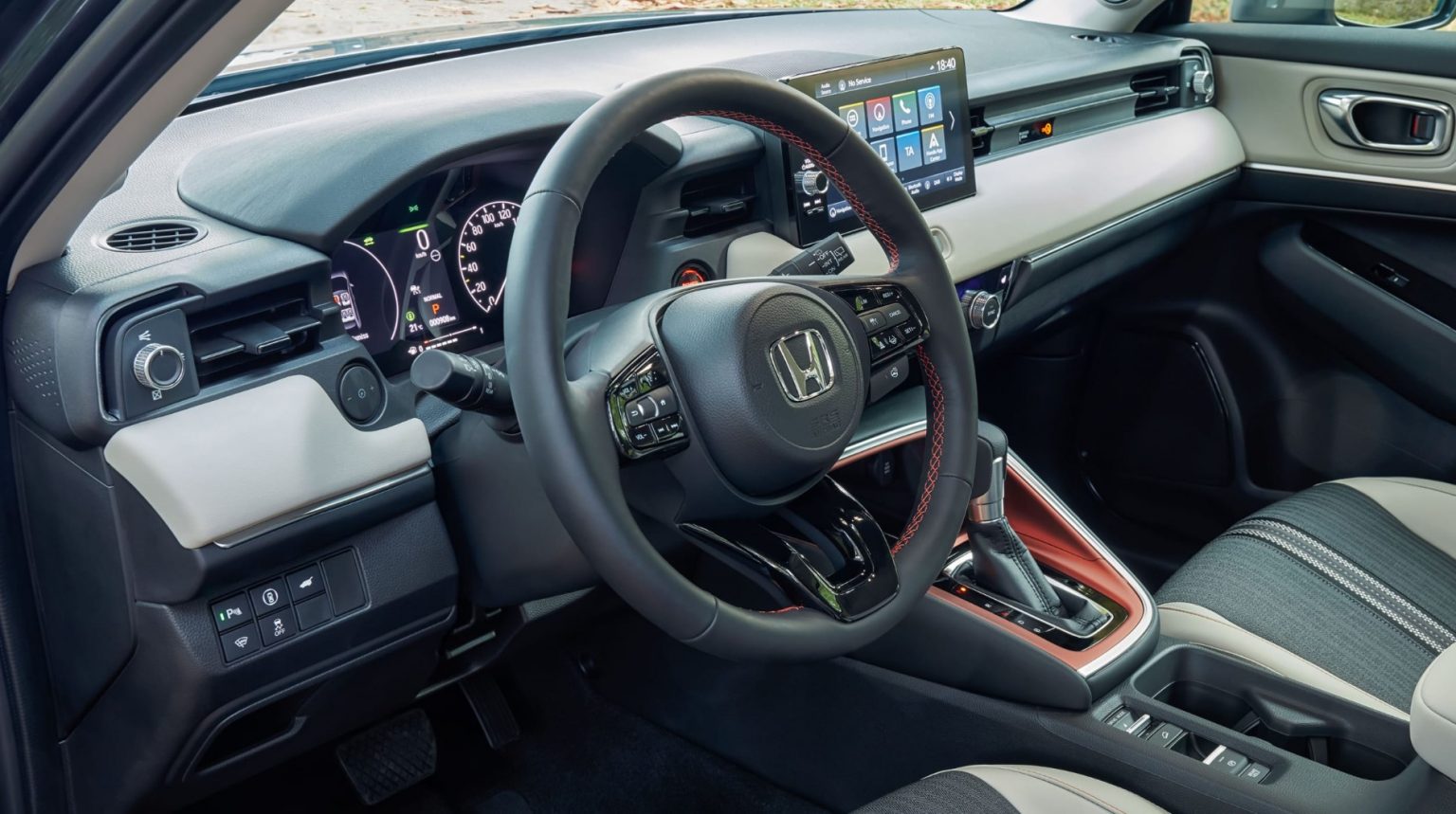
Cabin quality is strong throughout, though, with a soft-touch plastic dashboard and high-quality switchgear for the climate controls. It stops short of being luxurious, but it certainly feels built to last.
A nine-inch touchscreen infotainment set-up is standard on all HR-V models, and, similar to that in the Jazz supermini, it’s a big step on from previous-generation Honda systems. The display is sharp and responsive, with a simple tile interface that’s clear and easy to operate on the move. The sub-menus are slightly cluttered, but Android Auto and wireless Apple CarPlay can be used if preferred, which both feature as standard.
It’s unclear how the new HR-V will be offered in Australia, though details will be announced closer to themodel’s launch. In Europe where we are testing the HR-V for the first time, the range kicks off with Elegance specification, priced from around $48,000 Australian, but it is fair to expect more competitive pricing locally. LED headlights, heated seats and 18-inch alloys are standard, but Honda expects the more generously-equipped Advance model to be the most popular trim level. This adds a heated steering wheel, synthetic leather upholstery and a powered tailgate, with the range-topping Advance Style gaining two-tone paint and a premium 10-speaker stereo.
Whichever model you choose, the Honda HR-V is powered by hybrid tech adapted from the Jazz, which combines a 1.5-litre petrol engine with two electric motors to produce 96kW. This drives the front wheels through a CVT automatic gearbox, and the car will actively switch between electric, combustion power or a combination of both depending on the driving scenario.
The HR-V adopts pure EV running at low speed and sets off in silence. Immediately, the refinement is impressive. The cabin feels well isolated from outside noise, and with no combustion engine sound or vibration, progress around town is relaxing.
Over uneven surfaces, the HR-V remains fairly composed, too. The ride is slightly on the firm side and the car does fidget over a sequence of bumps, but it’s generally well-damped and comfortable, with the harshest knocks kept at a distance.
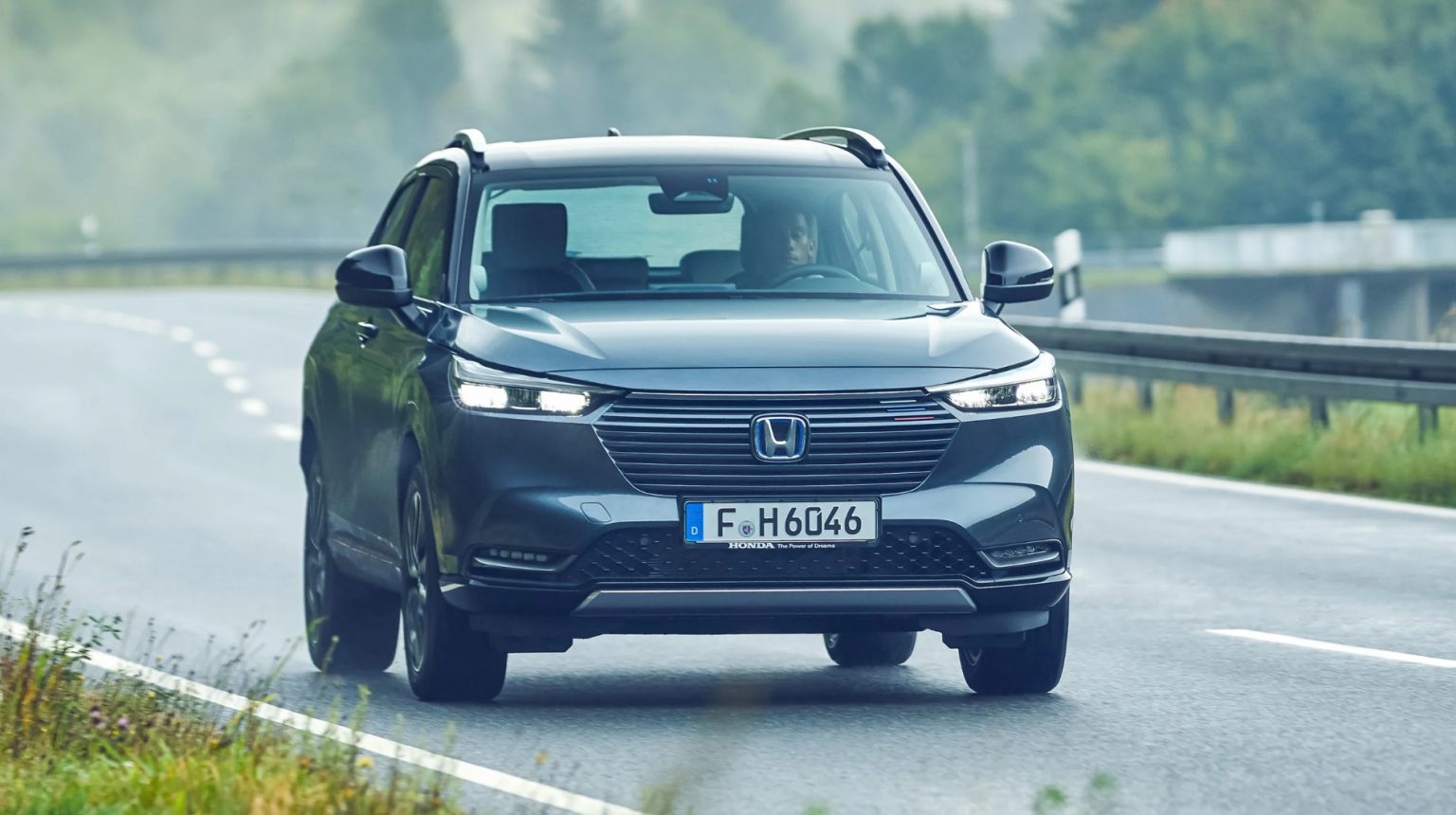
Refinement is eroded slightly at higher speed when the combustion engine kicks in. The transition to hybrid running is relatively smooth, but ask for more power and the HR-V’s eCVT gearbox sends the revs soaring with a thrashy noise from the engine.
The issue is compounded by a lack of outright grunt, with just 96kW on tap. The torque figure is more promising at 253Nm, but in a car of this size and with heavy hybrid components on board, the petrol engine works hard on steep inclines or during overtakes.
Gentle use of the throttle does mitigate the effect, however, and the HR-V remains fairly quiet at constant motorway speeds, despite some tyre and wind noise creeping in.
The HR-V’s steering is light but not overly so, and while almost completely devoid of feel, it’s accurate enough for the driver to place the car easily. The steering is also pretty quick, which allows tight, swift low-speed maneuvers.

While the HR-V isn’t the most athletic small SUV, the handling is neat and secure. There is some roll in quicker corners, but it’s mostly well contained, offering a fair level of grip. The brakes are reassuring, too, with a firm, consistent pedal feel – often a sticking point with electrified vehicles due to regenerative braking.
The strength of energy regeneration can be controlled by paddles behind the steering wheel, which is useful for adjusting deceleration without touching the brakes on the motorway, for example. Selecting B mode for the transmission gives a more severe off-throttle braking effect, too.
Over the course of our 114km test, which consisted of city driving, motorways and twisting B-roads, we averaged 6.3L/100km, falling short of Honda’s claimed 5.4L/100km figure. The HR-V does at least boast CO2 emissions of 122g/km.
There’s a lot to like about the new HR-V. It’s neatly designed inside and out, build quality is strong and it feels solid and well-engineered on the move, but it’s held back by a much smaller boot than before as a result of the electrified powertrain. The powertrain itself doesn’t feel particularly well suited to the car, either, and fuel efficiency is only respectable. The HR-V doesn’t quite cover all basis as a result, but it remains a pleasant package on the whole.
Yousuf Ashraf




